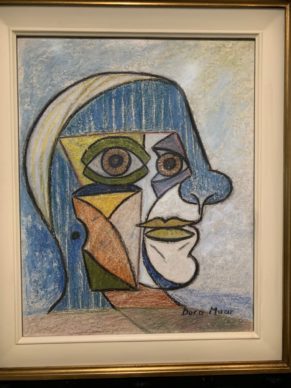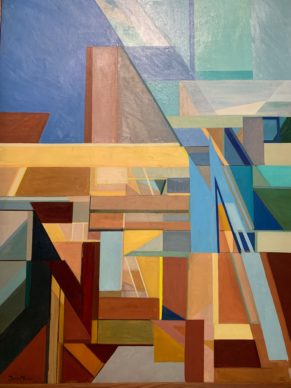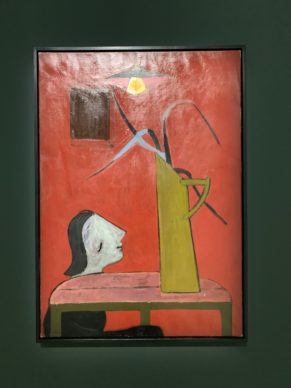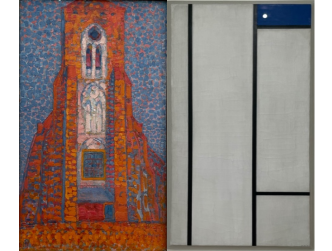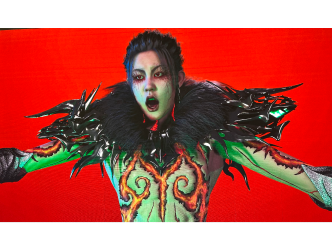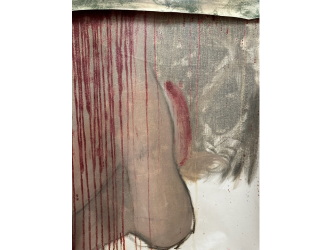The weeping woman
As far as art history is concerned, Dora Maar (1907-1997) will always be the “weeping woman” as named by her portrait, painted so many times by Picasso as a kind of fury with tears streaming down her unattractive face, distorted by bitterness and cubism.
Guernica
Dora Maar will also remain the woman who in 1937 documented through photography the creation of one of humanity’s masterpieces made by Picasso: Guernica, the huge “fresco” on the unbearable nature of blind violence that is on view today at the Museo Reina Sofia in Madrid.
Large scale exhibition
The Centre Pompidou is holding a large-scale exhibition on Dora Maar until 29 July. But strangely, the curators don’t address either subject in depth.
The great misogynist tradition
In the museum world of today the international priority, in a bid to catch up with the considerable delay caused by the great misogynist tradition, involves bringing women artists to the fore. But does Dora Maar deserve a privilege on such a scale?
Photography
If there’s a field where she excels, it’s photography. The exhibition displays various advertising images depicting charming urban scenes, but which we’ve already seen elsewhere.
Surrealism
And yet the woman who was also once Georges Bataille’s mistress moved in surrealist circles and conceived photomontages which would go on to become icons of the genre.
29 rue d’Astorg
This is the case for “29 rue d’Astorg” made in around 1936 depicting a strange figure positioned in front of archways stretching to infinity, and around the same time “Portrait d’ubu”, a nightmarish creature somewhere between mollusc and foetus.
Meeting the womanizer
The exhibition explains well how Dora composed her photos. It was also around this time that she would meet the womanizer and genius painter Picasso at the Café des Deux Magots. Her life would be transformed.
Paintings
Curiously, Picasso pushed her to abandon photography to dedicate herself to painting. It must be said she didn’t present much of a threat. While we see the best of her pictorial output at the Pompidou, Dora Maar remains a mediocre painter with a tepid Cubist production.
Fanatical bigotry
The rest of her life would be mainly marked by her fanatical bigotry and her memories of Picasso.
A house in the Lubéron
In 1946 he offered her a house in Ménerbes in the Lubéron, a parting gift that he obtained in exchange for a still life.
The auction of 1998
In 1998, before the auction that dispersed her estate in Paris, I had access to her private notebooks, handwritten exercise books. The most striking thing was that in the regular narrative of all her obsessions she had taken care to cut out the passages that alluded to her sexuality.
Picasso for ever
The auctions themselves revealed Picasso to have been at the centre of her life, with an infinite number of souvenirs great and small that she had meticulously preserved from her years spent with the genious painter.
Antisemitism
The Parisian dealer who specialized in Surrealism, Marcel Fleiss, the owner of the Galerie 1900-2000 often says that Dora Maar had a phobia of Jews which pushed her to make him swear that he was not one before she would agree to sell him certain works.
Eternal weeping woman
In spite of the attempts of two great European institutions to fly the flag for the memory of Dora Maar, it’s not certain that she could ever be anything other than the eternal “weeping woman”.
Until 29 July, Dora Maar www.centrepompidou.fr
From 20 November to 15 March, www.tate.org.uk/whats-on/tate-modern/exhibition/dora-maar
Support independent news on art.
Your contribution : Make a monthly commitment to support JB Reports or a one off contribution as and when you feel like it. Choose the option that suits you best.
Need to cancel a recurring donation? Please go here.
The donation is considered to be a subscription for a fee set by the donor and for a duration also set by the donor.












